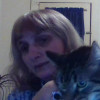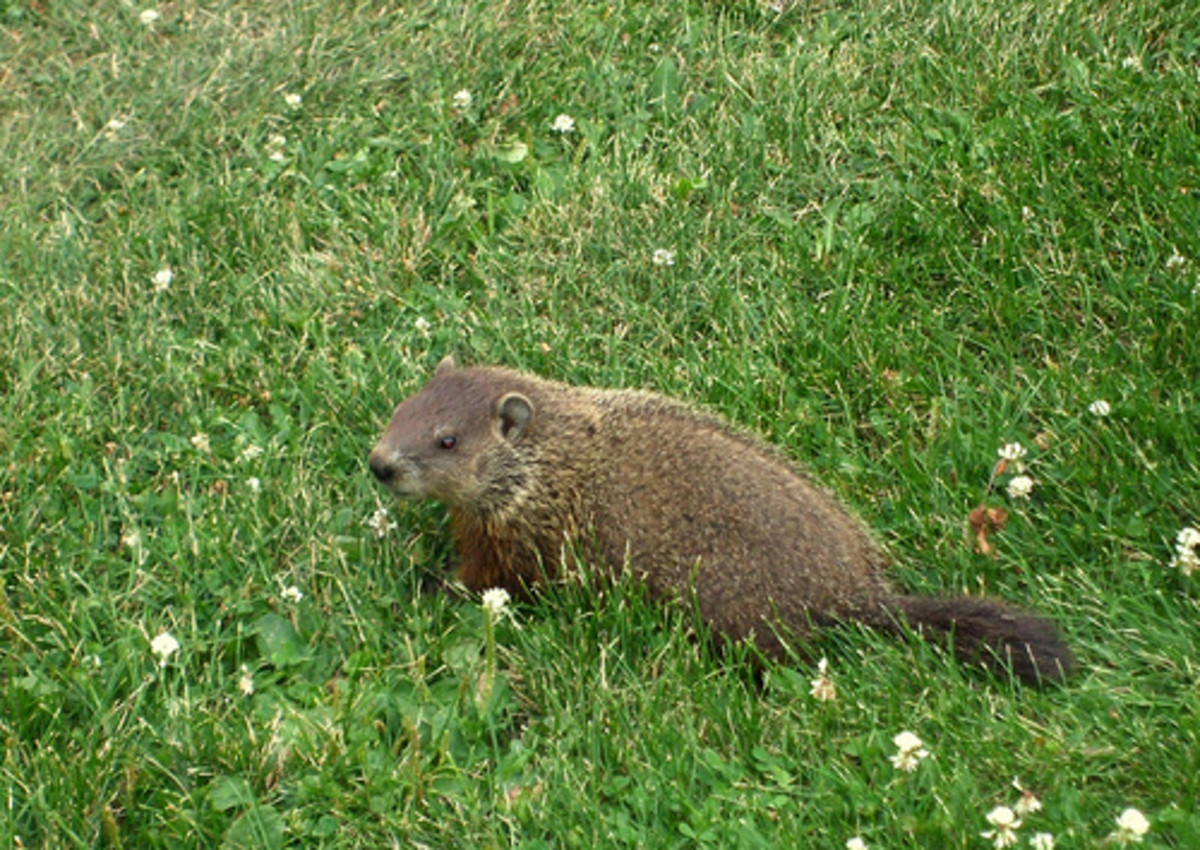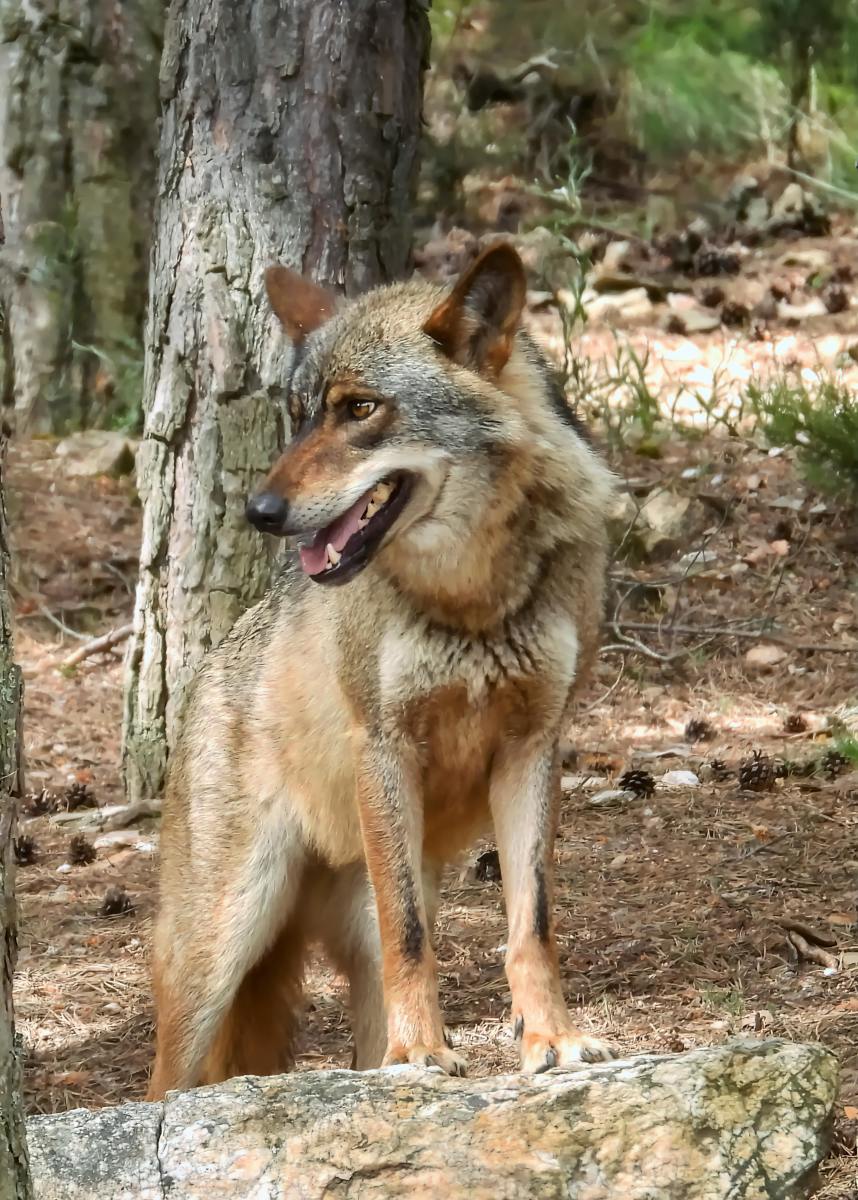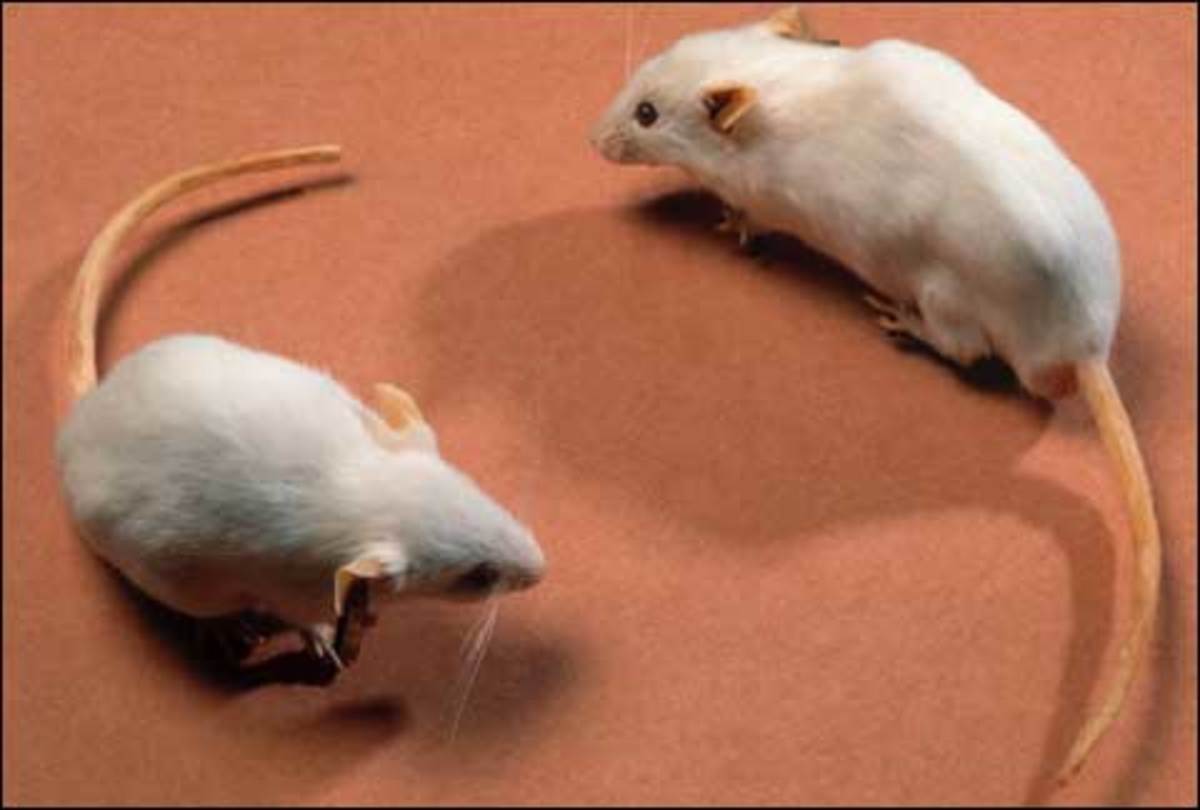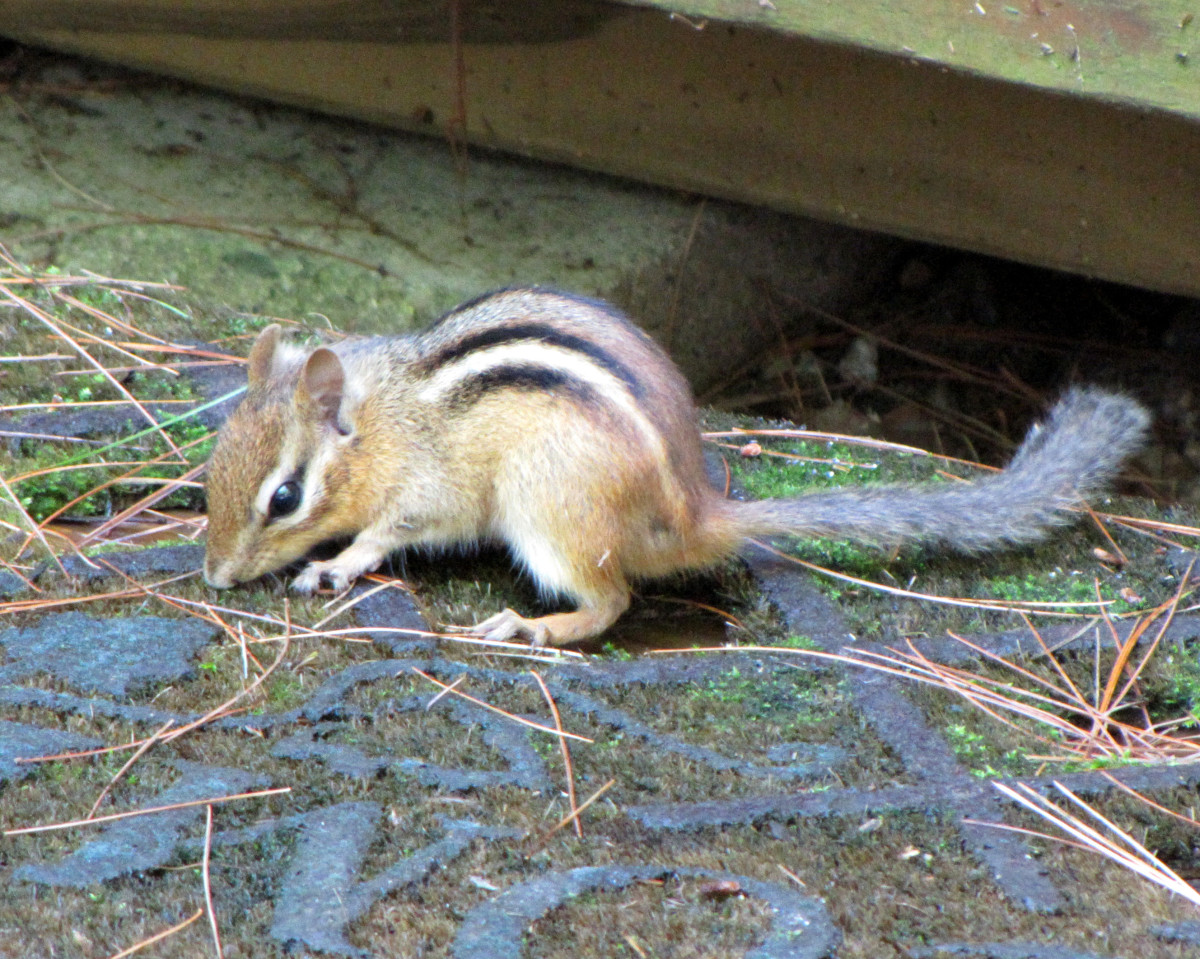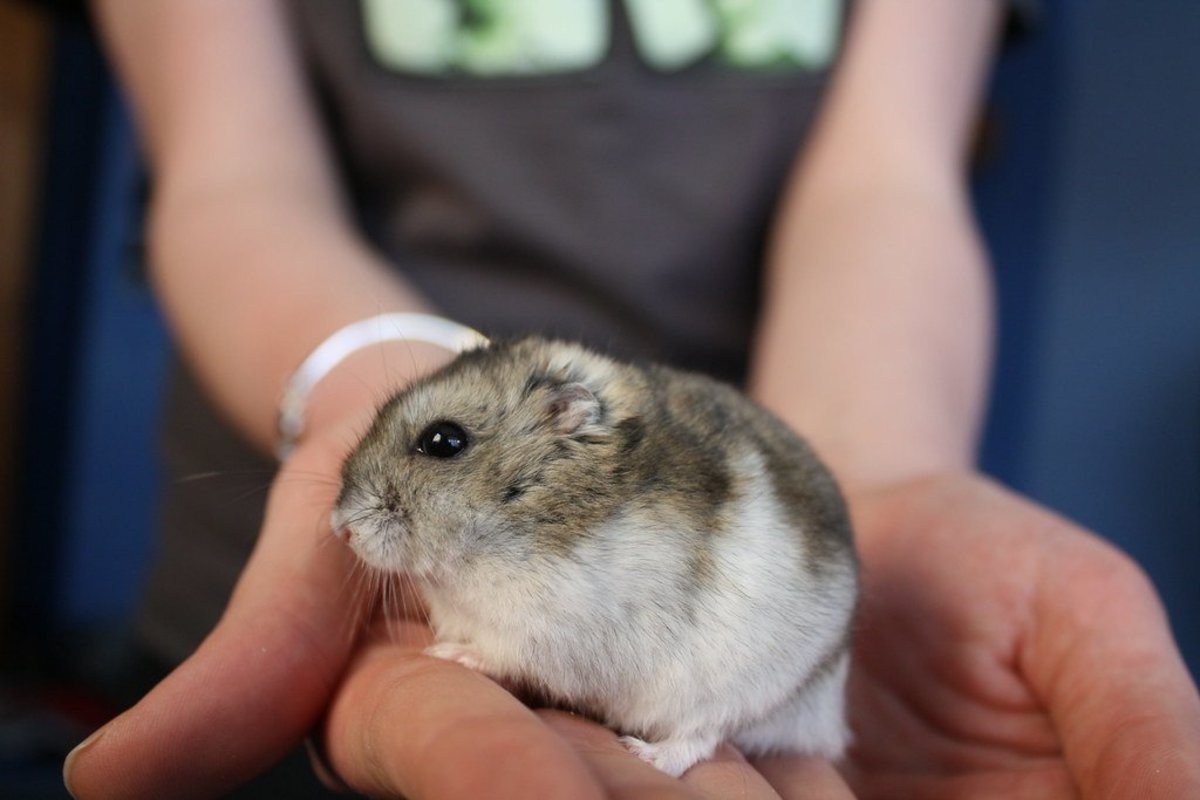The Common Masked-Faced (Bandit) Raccoon Living in North America
Raccoons Commonly Seen in North America
Raccoons are one of the most commonly recognized animals in North America. There are six different species of raccoon and only one of those species lives in North America. The other five live on tropical islands. Procyon Lotor (washer dog) is the scientific name for raccoon. Raccoons got the name "Procyon Lotor", because raccoons were observed dipping their food in water, so it looked like they were washing their food before eating it, but they really wasn't. Raccoons may be wetting their food to make it easier for them to eat. Raccoons have a black (bandit) like mask their face. Raccoons sort of look like bandits. Raccoons have paws with long fingers that are dexterous, and serve them well. Raccoons are night creatures (nocturnal), and search for food at nighttime. They are omnivores and will eat almost anything that they can find that is edible. They are not fussy eaters. Raccoons can be cute, especially when they're babies. Raccoons aren't so cute when they're diseased and mean.
Raccoons exist in forests, marshes, prairies, and even towns and cities. They're able to open garbage cans. They live in populated areas in towns and cities. They go into storm sewers, and that's where they live. Raccoons grow to be about the size of a small dog. Raccoons carry diseases, and may have rabies. Raccoons should never be approached. Raccoons can be extremely mean, especially when they are seen in groups, which is when they have young raccoons with them. Raccoons are a common sight in towns and cities, especially in the early hours of the morning.
More Raccoons
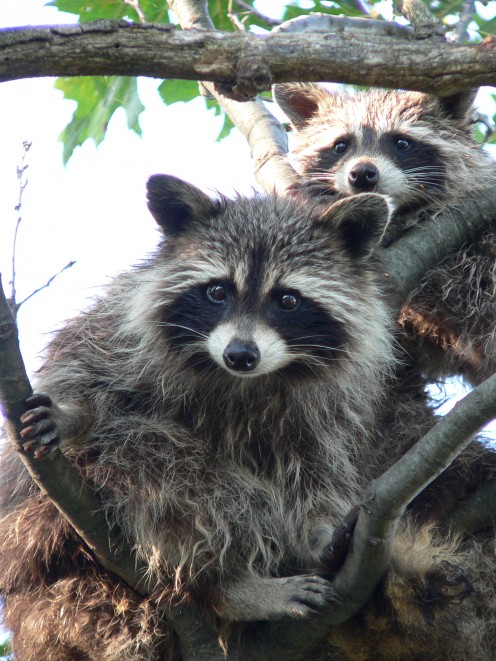
Raccoons are Omnivores
Raccoons will eat just about anything. Raccoons will eat fruit, plants, mice and insects. In the natural world, they will eat frogs, crayfish, and other creatures of the water. Raccoons, also, like to raid nests for eggs, which they find very tasty. Raccoons live in holes in trees, fallen logs, and house attics.Raccoons adapt easily to their environment and food sources, and can live in abandoned cars, house chimneys, and sewers. Raccoons can just live about anywhere, and can cause lots of trouble for population areas.
Raccoons are extremely intelligent. Raccoons have many vocalizations, they can purr, whistle, growl, hiss, scream and even whinny. Raccoons have been kept as pets, one example: President Coolidge and his wife kept one that was named Rebbecca. The raccoon was happy as long as it was young, but when it got older and matured, it got increasingly destructive and aggressive. The raccoon would also have sexually matured, which would have made it much more destructive and aggressive.
A Raccoon with the Black Mask
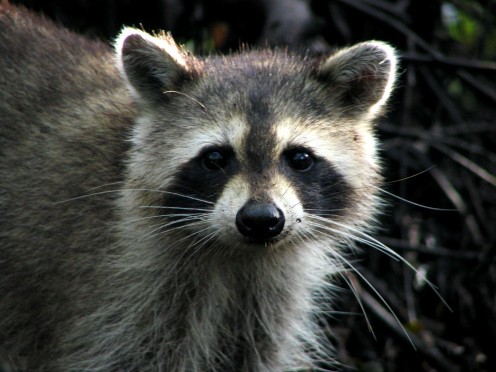
Some Facts About Raccoons
Raccoons are intelligent creatures. Their fur can be gray or brown. They have one litter a year, one to eight babies per litter, but usually have three or four babies (kits) in the litter. At birth, the kits eyes and ears are closed, but open 18 to 24 days later. Breeding season is from January to March. The gestation period of raccoons is 60 to 73 days. Raccoons can support their body weight with their legs at 4 to 6 weeks after their birth. Female raccoons are very protective of their young, and care for them for up to a year, until the young are old enough to be on their own. The young are weaned and start hunting for food by two to three months of age. The mother still takes care of them even though they are weaned and are able hunt for food on their own.
Female raccoons mature sexually at one year old, while males sexually mature at two. Raccoons live longer in the wild, than in populated areas. Raccoons do not have many predators in North America, except for man. Raccoons are hunted for their fur and meat, get run over by vehicles, or have been killed as pests. Raccoons have benefited from humans more often than not.
Davy Crockett is famous for wearing the coon shaped hat with the tail hanging down in the back. Raccoons are, also, called coons. Raccoons that live in cities, usually can be seen in the early morning hours running across the street or going into storm sewer openings at the end of streets. Raccoons can have rabies, and may be seen out during the day. A raccoon that is out during the day may be rabid, might look like its in a stupor, or looks like its drunk. Its better to stay away from them and call animal control to take care of it.
Raccoons Eating
Worldwide Range of the Raccoon
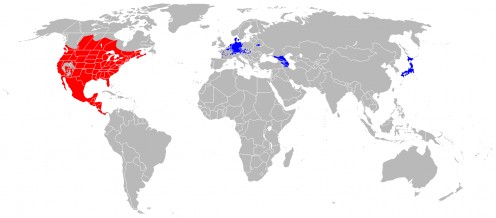
Raccoons, Mother Raccoons and Baby Raccoons
Female raccoons with babies tend to be extremely aggressive, ferocious, and shouldn't be approaached. Females feel that their babies are being threatened.Raccoons are usually seen as alone, but female with babies are seen in groups of two or more. The female raccoon can be mean. Raccoons carry rabies and distemper. Signs that a raccoon is rabid is when the raccoon is seen wandering or stumbling about during the day time hours, especially in populated areas, such as towns and cities. Raccoons showing these signs should never be approached, and should be reported to animal control. Rabies can be transmitted to humans by a scratch or bite. Never dispose of a raccoon; instead call a wildlife rehabilitation center or animal patrol, so that they can take care of it. Pets can't fight raccoons. Pets need to be protected from raccoons.
